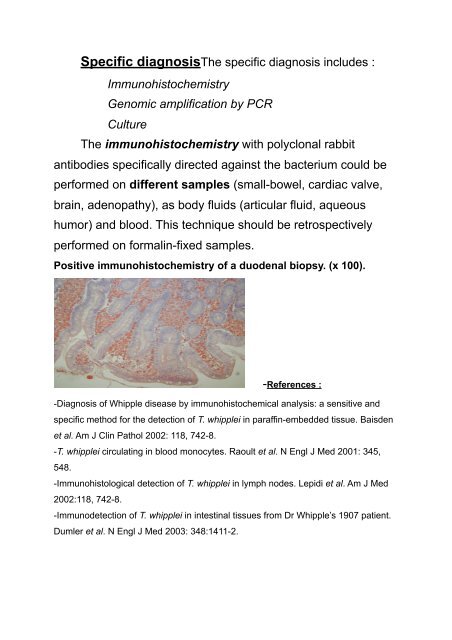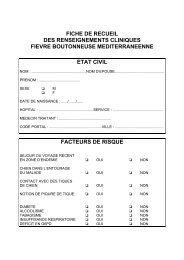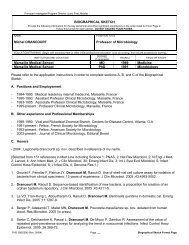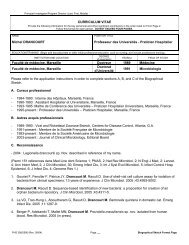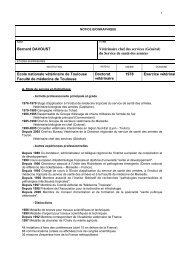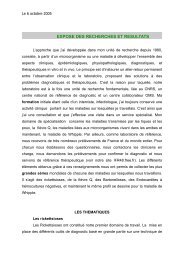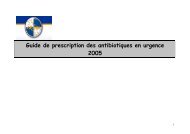Whipple's disease and Tropheryma whipplei
Whipple's disease and Tropheryma whipplei
Whipple's disease and Tropheryma whipplei
Create successful ePaper yourself
Turn your PDF publications into a flip-book with our unique Google optimized e-Paper software.
Specific diagnosisThe specific diagnosis includes :<br />
Immunohistochemistry<br />
Genomic amplification by PCR<br />
Culture<br />
The immunohistochemistry with polyclonal rabbit<br />
antibodies specifically directed against the bacterium could be<br />
performed on different samples (small-bowel, cardiac valve,<br />
brain, adenopathy), as body fluids (articular fluid, aqueous<br />
humor) <strong>and</strong> blood. This technique should be retrospectively<br />
performed on formalin-fixed samples.<br />
Positive immunohistochemistry of a duodenal biopsy. (x 100).<br />
-References :<br />
-Diagnosis of Whipple <strong>disease</strong> by immunohistochemical analysis: a sensitive <strong>and</strong><br />
specific method for the detection of T. <strong>whipplei</strong> in paraffin-embedded tissue. Baisden<br />
et al. Am J Clin Pathol 2002: 118, 742-8.<br />
-T. <strong>whipplei</strong> circulating in blood monocytes. Raoult et al. N Engl J Med 2001: 345,<br />
548.<br />
-Immunohistological detection of T. <strong>whipplei</strong> in lymph nodes. Lepidi et al. Am J Med<br />
2002:118, 742-8.<br />
-Immunodetection of T. <strong>whipplei</strong> in intestinal tissues from Dr Whipple’s 1907 patient.<br />
Dumler et al. N Engl J Med 2003: 348:1411-2.


